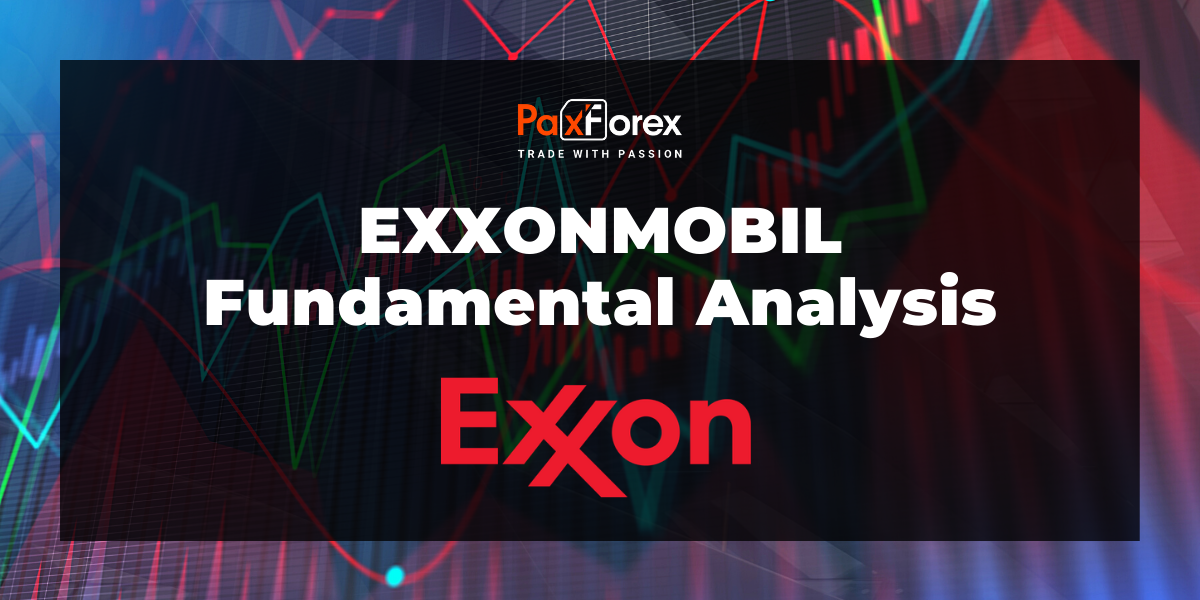
Source: PaxForex Premium Analytics Portal, Fundamental Insight
ExxonMobil boasts an impressive market capitalization exceeding $500 billion, firmly establishing itself as a powerhouse within the energy sector. The company offers a robust dividend yield of 3.3%, significantly higher than the S&P 500 Index's 1.2% and slightly above the average energy stock's yield of 3.2%, as represented by the Energy Select Sector SPDR ETF.
There are compelling arguments for considering an investment in Exxon at this time, as well as reasons to exercise caution.
While it's easy to view Exxon as simply an oil and natural gas firm, this perspective overlooks the full extent of its operations as an integrated energy company. Exxon is involved in various sectors:
- Upstream: This includes the exploration and production of oil and natural gas.
- Midstream: This segment encompasses the infrastructure necessary for transporting these resources, including pipelines.
- Downstream: Here, Exxon refines oil and gas into various products and chemicals.
Each segment of the energy landscape functions differently. Upstream earnings are heavily influenced by fluctuations in oil and natural gas prices. In contrast, the midstream operations operate primarily on a fee-based model, yielding consistent cash flows regardless of market conditions. The downstream sector can thrive during periods of low energy prices since oil and gas serve as key inputs, although its products (like gasoline) can be volatile commodities themselves.
Exxon’s diverse operations help mitigate the effects of the cyclical nature of the energy market. Although oil and natural gas prices remain crucial to its performance, the company’s diversified portfolio cushions it against the wild swings seen in a company solely focused on upstream activities.
In essence, Exxon is a resilient energy firm suitable for long-term investment, even amidst the volatility characteristic of the energy sector.
If you’re aiming to bolster your energy sector exposure, Exxon remains a solid contender at almost any time. However, it’s worth noting that its stock price fluctuates with the oil and gas market.
Currently, energy prices are relatively stable, making it a challenging decision to buy Exxon's stock at this moment. While the 3.3% dividend yield is respectable, it's worth noting that during downturns, this yield can surge to nearly 10%, reflecting a significant drop in stock price. This aspect of the dividend yield is crucial because Exxon has structured its business model to maintain its dividend even during market lows.
Management has successfully maintained a low debt level, allowing them to increase leverage during tough times to support the company and its dividends. As profitability rebounds with rising oil and gas prices, management reduces that leverage.
The effectiveness of this strategy is evident in the company's impressive 42-year history of annual dividend increases. Historical trends suggest that Exxon tends to be most attractively priced when its dividend yield peaks, making those moments ideal for investment.
If you're looking to diversify your portfolio with energy exposure, Exxon is a strong choice. While now isn't the worst time to invest, the stock has seen better days. Thus, if you can be patient, it may be wise to keep Exxon on your radar for the next downturn in oil prices, when the yield will be higher, and the stock price lower.
Adopting such a contrarian approach requires considerable conviction, but it could lead to acquiring this industry-leading energy company at the best possible price.
As long as the price is above 113.00, follow the recommendations below:
- Time frame: D1
- Recommendation: long position
- Entry point: 117.08
- Take Profit 1: 120.00
- Take Profit 2: 123.00
Alternative scenario:
If the level of 113.00 is broken-down , follow the recommendations below:
- Time frame: D1
- Recommendation: short position
- Entry point: 113.00
- Take Profit 1: 110.00
- Take Profit 2: 108.00













